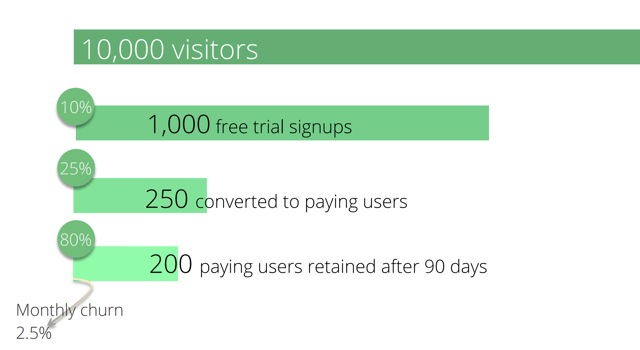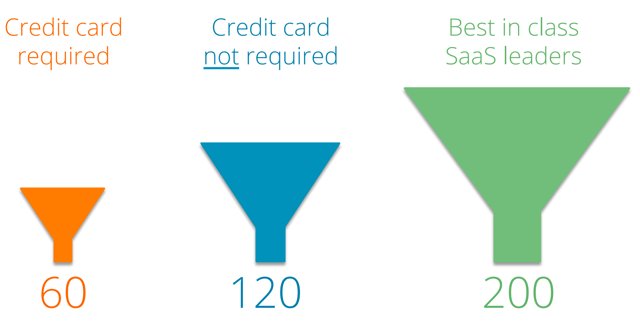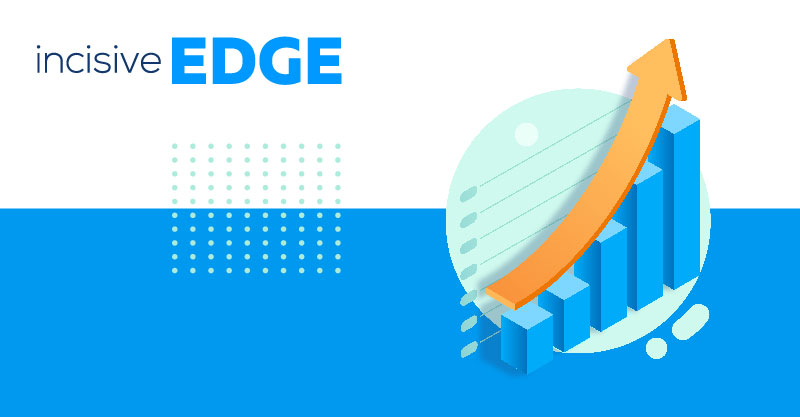Your SaaS marketing spend is one of your most important business investments.
In that regard, it’s like many other businesses. But unlike most other businesses, every prospect that makes it through the marketing funnel does not lead to a close/ onboarding. There’s at least one more funnel to go.
When a new user finds your product and is persuaded by your irresistible marketing material, they often sign up for your free trial. It’s a good start, but there’s still work to be done.
And that work is to your user onboarding flow.
It must be designed to guide your new trial user through your product's user interface (UI) to discover the real value you offer. Your onboarding flow must inadvertently encourage users to find your value proposition better than that of your competitors to increase user retention.
You must make their lives better in some way, ideally within the first five minutes of the user logging in for the first time. Failure to do so can result in the user feeling confused, frustrated, and disappointed, leading to abandonment, with the visitor unlikely ever to return. It emphasises the importance of what makes user onboarding important. A well-executed user onboarding process is crucial for leaving users wanting more of your service. Thankfully for you, several metrics can provide guidance on how to implement user onboarding effectively for a good user onboarding experience.
Metrics go down. An opportunity that cost money to generate, is now lost.
A poorly optimised or even non-existent user onboarding experience is the biggest reason for losing SaaS customers. It’s time to do something about it and get your SaaS marketing spend back on track.
The goal of user onboarding is to get the most qualified potential customers to become a part of your most loyal client base. If you don't know what that customer looks like, you'll want to start with user testing.
Check out the following articles to learn more about user onboarding:
- The 3-Step Process to Effective SaaS Customer Onboarding
- The Top 3 SaaS Challenges & How to Overcome Them
- Is HubSpot for Startups Onboarding Mandatory?
Two groups of users for onboarding
Onboarding users can be done in two different groups not often discussed in SaaS user onboarding. And it's important to make a distinction between them so you can approximate where your largest room for improvement might be and where to focus your efforts.
1. Users who abandon
The first group of users are those who abandon your product after the trial signup, but prior to becoming paying customers.
Totango conducted research to discover what an acceptable average was for SaaS conversions from trial signups to paying customers.

As a side note, it’s worth pointing out that the number of trial signups doubled for SaaS companies that dropped the requirement for credit card details. Essentially, it just acts as a barrier to entry to the trial signup and ultimately turns people off.
Copy to the effect of “no credit card required” is a great way to grab people’s attention and lower friction in the funnel. Here, you can see that idea backed up by the research.

Whether your SaaS requires a credit card, doesn’t require one, or if you can consider yourself “best in class”, take a look at your SaaS marketing conversion rates right now.
Use the relevant data point and benchmark your own trial signup to paying customer conversions against it. That way, you can see how much room for improvement can reasonably be expected.
Not all of the users who leave during the trial stage will be due to poor onboarding. But if this research is anything to go by, you can bet that quite a few of them do.
2. Users who churn
In a survey conducted by Preact, the top reasons for user churn were determined. At the very top of the list? Poor user onboarding.
Incidentally, the second most common reason for people to churn is an underperforming product; something no amount of slick user onboarding flows can help with. We’ll look at how to deal with that later on.
The essential consideration is that 23% of paying users who exit your product can be saved if you enhance your user onboarding processes. Optimising your site to provide users with the right information based on where they are in their user journey is crucial. Understanding user behaviour is a key aspect in this context. Leveraging effective user onboarding tools further contributes to this strategy, ensuring a seamless and satisfying user experience.
Look at your average lifetime value (LTV) and multiply that by 23% of the users lost every month. Then, you’ll see the amount of money left on the table from this group.
Number crunching example
Okay, so there’s cash on the table. How do you calculate how much money is on the table specifically? Let’s look at a mathematical example. Change the numbers relevant to your situation.
Our theoretical company started with around 500 unique visitors per month. According to HubSpot’s research, six months of inbound SaaS marketing will increase that by figure by 3.18 times.
That means a few months of marketing your SaaS product with inbound, and we’re seeing 1,590 unique visitors per month. Not bad.
Our example SaaS company has decided to forgo a credit card as a barrier to entry and is enjoying the average conversions of visitor to trial sign-ups published by Totango. Likewise, around 15% become paying customers each month, which means:
(monthly unique visitors) 1,590 x (conversions to trial signups 10% ) 0.10 = 159
(monthly trial signups) 159 x (conversions to paying customers 15%) 0.15 = 24
If we have an average customer lifetime value (LTV) of £2,500, that means your inbound SaaS marketing is working its magic as usual.
(LTV) £2,500 x (monthly new customers) 24 = (monthly revenue) £60,000
Unfortunately though, we know from the Preact survey that 23% of those users will churn due to poor user onboarding. Rounding the numbers up, that means 6 lost customers per month or 72 customers annually.
(annual customers lost due to poor onboarding) 72 x (average LTV) £2,500 = (annual revenue loss due to poor onboarding) = £180,000
Oh dear.
Let’s look at what we can do about it.
How to start
Good user onboarding for SaaS starts with the so-called and often illusive “Aha!” moment.
The term was first coined a couple of years ago at San Francisco’s Growth Hacker Conference and it describes that special moment where a user hits your UI for the first time and achieves something.
Typically, it’s the first small taste of what your product does to make their lives easier, faster, more fun, make them money or save money.
In an article published on GrowthHack.com, examples were given from marketing heads of major SaaS companies including LinkedIn, Twitter and Dropbox. The latter two are particularly interesting.
We’ll look to them for examples.
Twitter’s “Aha!” Moment
Let’s start with Twitter. The company’s head of growth, Josh Elman, found there was a key difference between users who abandoned Twitter and those who didn’t. Users who followed 30 people’s Twitter feeds were the ones who stuck around.
New users saw microblogs of their favourite figureheads of pop culture and business appear in their feed right off the bat. When that happened? They were hooked.
With the “Aha!” moment discovered, the roadmap for the user onboarding flows was simple.
When new users sign up and go through the account creation process, they’re encouraged to follow 30 popular accounts prior to even seeing their own page.
If you’ve seen that flow in Twitter, it’s not an arbitrary decision. The company did research, discovered the common denominator of users who stuck with Twitter and then implemented an onboarding flow accordingly.
DropBox’s “Aha!” Moment
After reading Twitter’s, take a moment to see if you guess the Dropbox “Aha!” moment.
Simple. It’s when users put at least one file in their Dropbox folder so they could see it live and in place within the cloud storage tool.
What did the company’s growth manager, ChenLi Wang, do? Made sure this task was incorporated into the onboarding process.
Onboarding Tools to use
So, you need to get that cash flowing in the right direction and your “Aha!” moment must be discovered to propel your SaaS marketing strategy. Next, you need the right tools for the job.
Determining the best approach depends on the nature of your SaaS. Some products feature a highly interactive marketing funnel, while others adopt low or no-touch funnels. Mobile accessibility is another variable, as is the consideration of UI intricacy. Striking the right balance in these aspects not only shapes user onboarding experiences but also keeps users engaged with your product.
As is often the case with all marketing – and SaaS marketing is no different, experimentation is the key. Here are three of the best onboarding tools in the world. with great user onboarding examples.
MixPanel
MixPanel is a great place to start. Not only does it offer analytics for each stage of your sales funnel (such as registrations and free trial signups), but you can also set up analytics for each action taken within your UI.
- If people are reading your website pages, it tells you which ones and for how long
- Where users are dropping off in your UI
- Actions commonly taken by successful users and not taken by users who churn
Armed with this information, you can build a detailed picture of how your users are behaving inside your product.
The tool has a flexible and event-driven custom email feature so you can automatically encourage people back into your onboarding flow, increasing the chances of conversions.
Intercom
Intercom is similar to MixPanel in so much as it’s a varied and diverse user onboarding toolkit.
It allows you to contact users a number of different ways including in-app messages that, typically have significantly higher open rates than the average email.
It also lets your SaaS marketing team communicate with a full customer profile on-screen, in real-time so you know how to engage people in a way that’s relevant to them.
All of your customer interactions can be A/B tested inside the UI and the software does a great job of tying your comms together.
LiveChat
This may seem like a generic suggestion, but that’s far from the case.
LiveChat famously increased conversions on websites such as Intuit.com, which saw conversions rocket by 211% simply by giving users the option to contact them when they needed help and having a progress bar available.
Remember, SaaS user onboarding means teaching your users the skill of how to use your product. With a knowledgeable member of your team who has an intimate understanding of your product standing by, you can do precisely that.
It also has the benefit of gathering qualitative feedback on your product. Such information is as scarce as it is valuable for SaaS companies. And once you’ve helped somebody get the value you promised them in your marketing material, they’ll often be more than happy to reciprocate with feedback on what they like and what they don’t.
Customer support is important, too
LiveChat is an excellent tool to provide customer support, but you can take things a step further. After all, user onboarding and customer support are inexorably linked to your SaaS marketing success.
So, if you have a particularly intricate SaaS product and/or your LTV is high enough to justify the investment, it’s worth considering going the extra mile and opting for Zendesk or a similar service.
Zendesk
Zendesk is particularly worth checking out because it has such an excellent user onboarding experience of its own.
It lets you integrate your customer service with Twitter which can contribute to your social media marketing. It has a customer ticket prioritisation system and the internal comms’ features help your team easily work on customer problems together.
Make sure you’re ready
If you’re reading this right now and you have an early-stage SaaS product, it may not be the right time to focus on user onboarding. Your SaaS marketing spend won’t be as efficiently spent as you’d like, but there’s work to do first.
Remember in the Preact survey, an underperforming product is the second most common reason for churn, accounting for 20% of lost customers.









